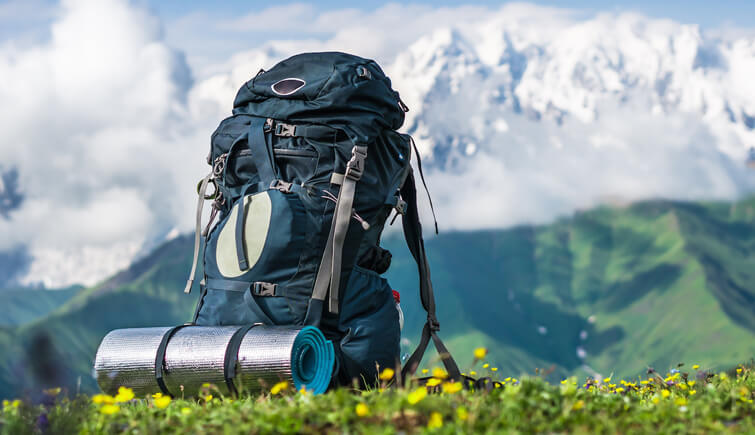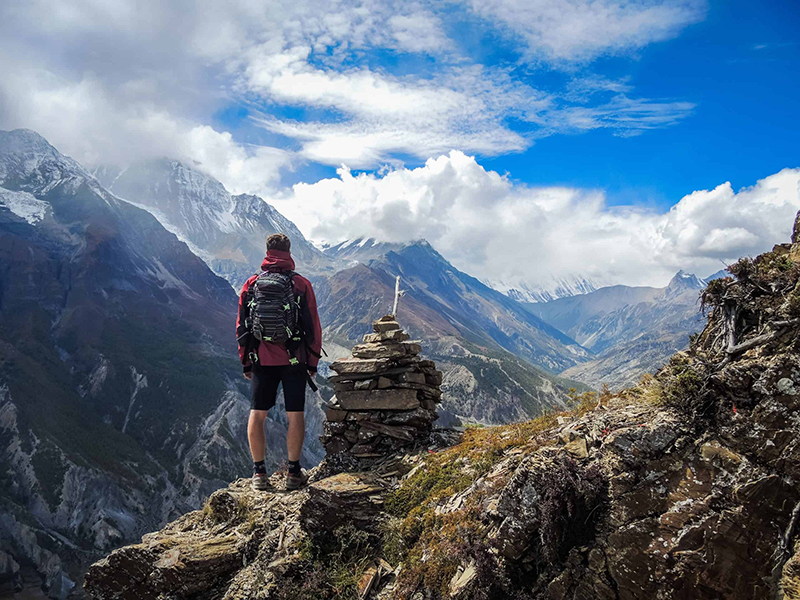Solo Trekking: A Guide to Safe and Enjoyable Solo Adventures
Embarking on a solo trekking adventure is a unique and rewarding experience that allows you to connect with nature, test your limits, and discover the depths of self-reliance. While the prospect of solitude in the great outdoors can be alluring, it comes with its set of challenges and responsibilities. In this comprehensive guide, we'll explore essential tips and considerations to ensure your solo trekking journey is not only safe but also immensely enjoyable.
1. Thorough Planning: The foundation of a successful solo trek lies in meticulous planning. Research your chosen trail thoroughly, considering factors such as terrain, climate, and elevation. Familiarise yourself with the local flora and fauna, regulations, and any potential risks. Create a detailed itinerary, informing someone reliable about your route, expected duration, and estimated return time. Carry a map, compass, or GPS device, and have a backup plan in case of unforeseen circumstances.
2. Proper Equipment:

Investing in quality gear is paramount for solo trekkers. Ensure your backpack is equipped with essentials such as a first aid kit, multitool, headlamp or flashlight, fire-starting tools, and extra clothing layers. Quality footwear, a durable tent, and a sleeping bag suitable for the anticipated conditions are crucial. Consider the weight and functionality of each item to maintain a manageable load, enhancing both safety and comfort during your trek.
3. Emergency Communication: In the remote wilderness, reliable communication can be a lifesaver. Carry a fully charged mobile phone with an extra power bank and a satellite communication device for areas with poor or no network coverage. Familiarise yourself with emergency procedures, including how to signal for help using visual or auditory cues. Register with local authorities or trail organisations if necessary, providing them with your itinerary and emergency contact information.
4. Physical Fitness: Solo trekking demands a higher level of physical fitness and endurance. Assess your fitness level honestly and tailor your trek to match your capabilities. Incorporate strength training and cardiovascular exercises into your pre-trek preparation. Gradually increase the difficulty and duration of your training sessions to simulate the challenges you might face on the trail. Adequate physical preparation ensures you can navigate the terrain with confidence and reduce the risk of injury.
5. Navigation Skills:
Navigating unfamiliar terrain is a fundamental skill for solo trekkers. Learn how to use a map and compass, and familiarise yourself with GPS navigation systems. Practice route planning and navigation in different environments to enhance your proficiency. Trust your skills but also remain open to adjusting your route based on changing conditions or unexpected challenges.
6. Leave No Trace Ethics: Respecting the environment is crucial for both ethical and safety reasons. Adhere to Leave No Trace principles by minimising your impact on nature. Proper waste disposal, respecting wildlife, and staying on designated trails not only preserve the environment but also reduce the chances of getting lost or encountering hazardous situations.
7. Weather Awareness: Weather conditions can change rapidly in outdoor settings, impacting both safety and comfort. Stay updated on local weather forecasts before and during your trek. Carry appropriate clothing for various weather scenarios, including rain gear, insulation layers, and sun protection. Be prepared to adjust your plans based on weather forecasts, and prioritise safety overreaching predetermined milestones.
8. Adequate Nutrition and Hydration:

Maintaining optimal nutrition and hydration is essential for sustaining energy levels during solo treks. Plan your meals and snacks, ensuring they are lightweight, non-perishable, and provide a balanced mix of carbohydrates, proteins, and fats. Stay well-hydrated, especially in higher altitudes, to prevent dehydration and related health issues.
9. Campsite Selection: Choosing the right campsite is a critical aspect of solo trekking safety. Opt for established campsites whenever possible to minimise environmental impact. Consider factors such as proximity to water sources, shelter from wind, and terrain stability. Be aware of potential hazards, such as dead trees or overhanging rocks, and set up your camp in a safe and strategic manner.
10. Mental Preparedness:

Solo trekking requires a resilient and prepared mindset. Stay mentally focused, and be aware of your surroundings at all times. Embrace solitude as an opportunity for self-reflection and personal growth. Develop coping strategies for unexpected challenges, such as adverse weather conditions or changes to your planned route. Cultivate a positive and adaptable attitude to navigate the mental aspects of solo trekking successfully.
11. Wildlife Encounters: In many trekking destinations, encounters with wildlife are a possibility. Educate yourself about the local fauna and understand the appropriate reactions to various species. Carry bear spray or other deterrents if you're in an area known for bears or other potentially dangerous wildlife. Stay vigilant, make noise while hiking to alert animals to your presence, and store food securely to avoid attracting wildlife to your campsite.
12. Learn Basic First Aid: Accidents and injuries can happen in any outdoor setting. Equip yourself with basic first aid knowledge and carry a well-stocked first aid kit. Learn how to address common trekking-related injuries such as blisters, sprains, and minor cuts. Consider taking a wilderness first aid course to enhance your skills and confidence in managing more severe situations.
13. Trust Your Instincts: Intuition is a powerful tool for solo trekkers. Trust your instincts and be cautious if something feels off. If a situation or trail seems unsafe or unfamiliar, don't hesitate to change your plans. Avoid taking unnecessary risks, and prioritise your safety above reaching specific destinations or completing predetermined objectives.
14. Connectivity and Solo Trekking Apps:
In the age of technology, leverage connectivity to enhance your safety. Download offline maps, GPS tracking apps, and emergency contact apps designed for solo adventurers. These tools can provide real-time location sharing, route tracking, and even emergency services coordination, offering an extra layer of security during your solo trek.
15. Cultural Sensitivity: If your solo trek takes you through areas inhabited by local communities, approach interactions with cultural sensitivity and respect. Learn about local customs, traditions, and expectations. Seek permission before entering private lands, and be mindful of the impact of your presence on the local community and environment.
16. Document Your Journey: Capture the essence of your solo trekking experience by documenting your journey. Keep a journal, take photographs, or create a vlog to record your thoughts, emotions, and memorable moments. Not only does this provide a personal record of your adventure, but it can also serve as valuable information for future solo trekkers considering similar routes.
17. Emergency Shelter: Pack a lightweight emergency shelter, such as a bivy sack or an emergency space blanket. This compact item can provide crucial protection in unexpected situations, such as extreme weather conditions or if you find yourself unable to reach your planned campsite.
18. Stay Informed on Local Regulations:

Different trekking destinations may have specific regulations and permits. Stay informed about local rules and obtain any necessary permits before embarking on your solo trek. This ensures that you are in compliance with local authorities and minimises the risk of legal or safety issues during your adventure.
19. Regular Check-Ins: Establish a routine for regular check-ins with someone you trust. Whether it's a friend, family member, or a designated contact person, provide them with your itinerary and expected check-in times. Consistent communication allows for timely intervention in case of emergencies and provides a sense of security for both you and your loved ones.
20. Reflect and Learn: After completing your solo trek, take the time to reflect on the experience. Consider what went well, any challenges you encountered, and how you handled them. Use this reflection as a learning opportunity to refine your future solo trekking plans, adapting your approach based on the lessons learned from each adventure.

In conclusion, solo trekking is a remarkable endeavour that demands careful planning, physical preparation, and mental fortitude. By incorporating these comprehensive guidelines into your solo trekking approach, you can navigate the challenges of the trail with confidence, ensuring a safe and deeply fulfilling adventure. Remember that each solo trek offers a unique opportunity for self-discovery and connection with nature, making it an experience to be cherished and respected.



